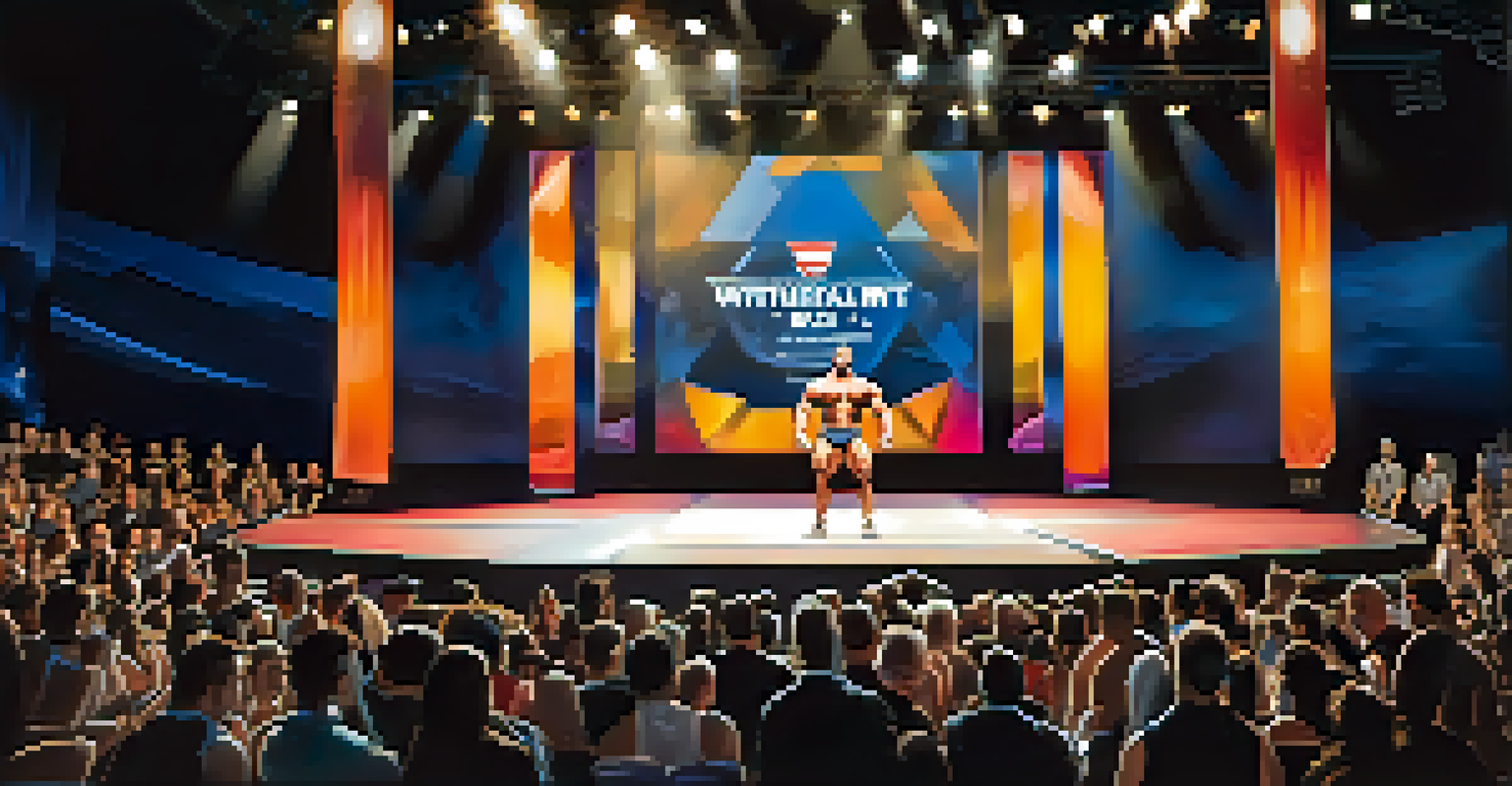The Influence of World War II on Bodybuilding Popularity

The Post-War Era and a New Focus on Fitness
After the dust settled from World War II, many returning soldiers faced the challenge of reintegrating into civilian life. This transition brought a renewed focus on health and fitness, as many veterans sought to reclaim their strength and physical prowess. The societal emphasis shifted towards valuing physical fitness, setting the stage for bodybuilding's rise in popularity.
Physical fitness is not only one of the most important keys to a healthy body, it is the basis of dynamic and creative intellectual activity.
Moreover, the war had exposed many individuals to the importance of physical conditioning, particularly those who served in combat. This awareness sparked an interest in developing the body, not just for sport, but as a lifestyle choice. As the nation celebrated its heroes, people began to idolize strong, fit physiques, giving rise to a new cultural phenomenon.
Bodybuilding began to morph from a niche hobby into something more mainstream, driven by this newfound appreciation for fitness. Gyms started popping up, and fitness magazines began highlighting the benefits of strength training, making bodybuilding accessible to a broader audience.
The Role of Media in Popularizing Bodybuilding
In the years following the war, media played a crucial role in popularizing bodybuilding as a legitimate pursuit. Magazines and films began showcasing muscular bodies, often featuring former servicemen who had embraced bodybuilding as a way to stay fit. This portrayal helped to demystify the sport and made it more appealing to the average person.

Icons like Steve Reeves emerged during this time, representing the ideal physique and inspiring countless individuals to follow in their footsteps. These figures became household names, and their success stories motivated many to pick up weights. As these stars gained fame, the allure of bodybuilding continued to grow.
Post-War Fitness Boom
The aftermath of World War II sparked a cultural shift towards valuing health and fitness, leading to the rise of bodybuilding.
Additionally, organizations like the International Federation of Bodybuilding (IFBB) began to formalize the sport, creating competitions that captured public interest. The emergence of these events, coupled with media coverage, helped solidify bodybuilding's place in popular culture.
The Influence of Health Consciousness on Bodybuilding
The post-war era also saw a rise in health consciousness, partly driven by the need for physical resilience in the face of adversity. As more people began to recognize the connection between health and quality of life, bodybuilding became an appealing option for those looking to improve their fitness. This movement promoted not just muscle growth, but overall wellness.
Strength does not come from winning. Your struggles develop your strengths. When you go through hardships and decide not to surrender, that is strength.
Health clubs and fitness centers started to prioritize bodybuilding as a key aspect of their offerings, attracting a diverse clientele. Women, too, began to embrace weight training, breaking stereotypes and expanding the definition of fitness. This inclusivity contributed to bodybuilding's growing popularity across different demographics.
As the concept of a healthy lifestyle gained traction, the industry responded with a range of nutritional products and supplements aimed at bodybuilders. This boom in health products further fueled interest in the sport, making it easier for individuals to pursue bodybuilding in a way that felt achievable and rewarding.
Bodybuilding as a Symbol of Strength and Resilience
In the aftermath of World War II, bodybuilding emerged not just as a sport, but as a symbol of strength and resilience. For many, the act of lifting weights became a metaphor for overcoming obstacles and rebuilding oneself after the turmoil of war. This powerful association resonated with a generation eager to reclaim control over their lives.
The physical transformation that bodybuilding offered was paralleled by emotional and mental rejuvenation. As people sculpted their bodies, they often found a sense of purpose and community, connecting with others who shared similar goals. This social aspect of bodybuilding became an essential part of its appeal.
Media's Role in Bodybuilding
Media exposure, including films and magazines, played a crucial role in popularizing bodybuilding and inspiring individuals to pursue fitness.
As the culture of bodybuilding grew, it also began to attract attention from various sectors, including fashion and advertising. Brands started to recognize the power of the bodybuilder's image, using it to convey messages of strength and vitality, further embedding bodybuilding in the fabric of society.
The Rise of Competitive Bodybuilding Events
With the growing interest in bodybuilding, competitive events began to gain traction, showcasing the hard work and dedication of athletes. Competitions like Mr. Olympia emerged, drawing significant audiences and offering a platform for bodybuilders to demonstrate their physiques. These events helped to solidify bodybuilding as a legitimate sport.
The competitive aspect added an exciting layer to bodybuilding, attracting not just participants but also fans. Spectators were captivated by the sheer display of strength and aesthetics, fueling a growing community of enthusiasts. This sense of competition encouraged more individuals to pursue bodybuilding seriously.
As the sport became more organized, it also attracted sponsorship and media coverage, further elevating its status. The spectacle of competition, complete with elaborate poses and routines, transformed bodybuilding into a form of entertainment that resonated with a broader audience.
The Global Expansion of Bodybuilding Culture
Following the war, bodybuilding's popularity began to spread beyond the United States, influencing cultures worldwide. As American soldiers returned home and shared their newfound passion for fitness, they inadvertently sparked interest in bodybuilding in other countries. This global outreach facilitated the exchange of ideas and training techniques.
International competitions and exhibitions showcased diverse bodybuilding styles, enriching the sport and allowing for cross-cultural influences. Bodybuilding clubs and federations began to form in various nations, creating a global community of enthusiasts dedicated to the pursuit of strength and aesthetics.
Global Bodybuilding Expansion
Bodybuilding's popularity spread internationally post-war, fostering a global community and diverse styles within the sport.
This globalization also led to the emergence of international bodybuilding stars, who inspired their local populations and helped to further popularize the sport. The interconnectedness of bodybuilding culture fostered a sense of unity among practitioners, transcending borders and backgrounds.
The Lasting Legacy of WWII on Bodybuilding Today
Today, the legacy of World War II can still be felt in the world of bodybuilding. The emphasis on fitness, health, and resilience that emerged from this period continues to influence modern culture. As more people prioritize their well-being, bodybuilding remains a relevant pursuit that promotes physical strength and mental fortitude.
Moreover, the inclusivity that began to take shape in the post-war era has continued to evolve, with the sport now welcoming a diverse range of participants. Bodybuilding today reflects a variety of body types, fitness goals, and personal journeys, making it accessible to everyone who wishes to embark on their own transformation.

As we look back on the influence of World War II on bodybuilding, it's clear that this relationship is more than historical; it's a testament to the enduring human spirit and the quest for strength in times of uncertainty.